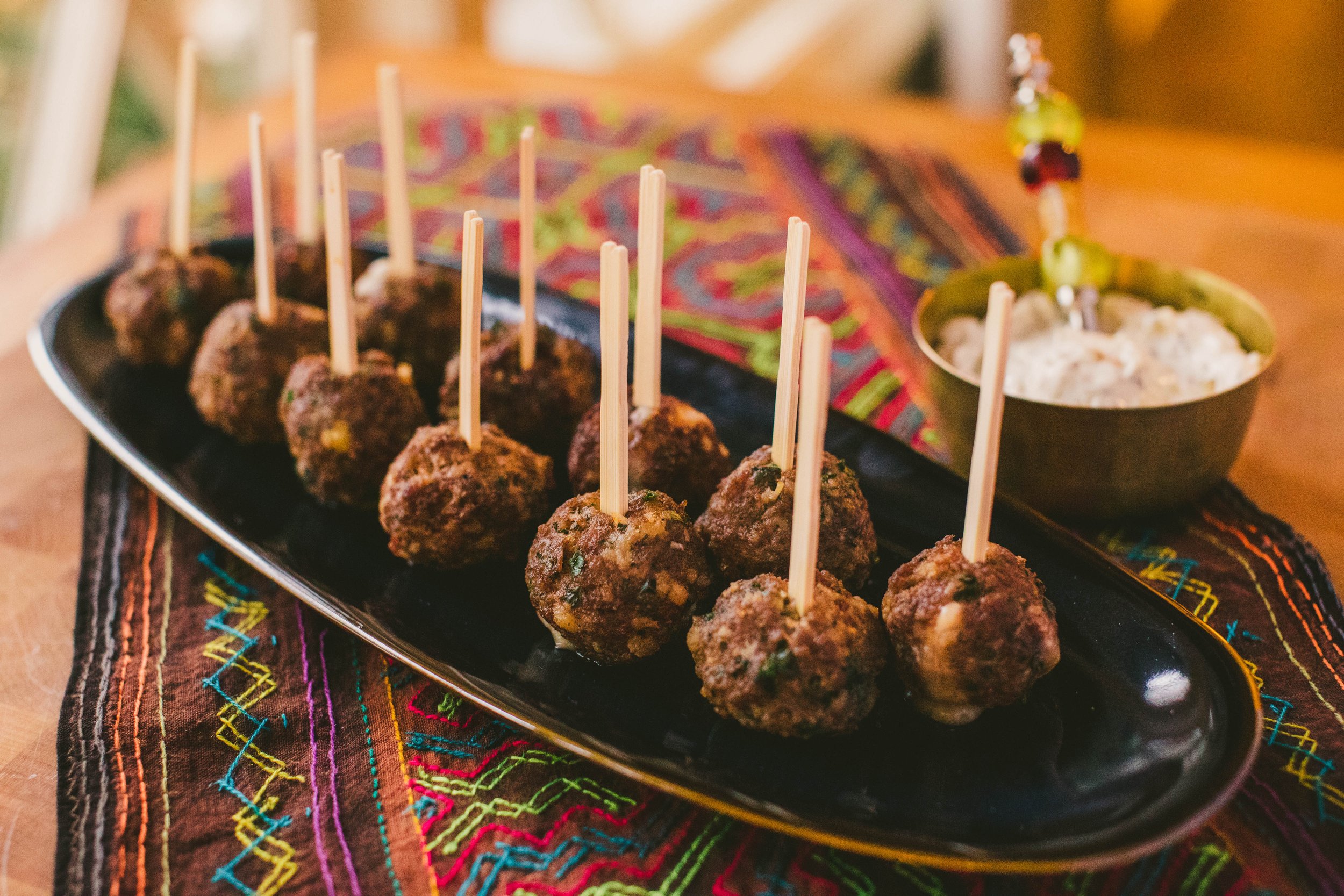Puglia: A Quiet Visit To Southern Italy
After traveling around the busier parts of Italy for three weeks, I finally rested in the beautiful Puglia region in southern Italy. Flying from Bari to Rome was breathtaking; as we flew, I drank in gorgeous views of farmlands, vineyards, and olive groves that stretched away into the distance, seemingly endless. Puglia provides 30 % of the world's olive oil, more than any other region in Italy. Being a chef and all, this delighted me.
Puglia is a narrow land mass surrounded by the Adriatic and Ionian Seas. The region has been inhabited as far back as 1000 B.C. and has plenty of architectural structures that have been discovered and restored. My daughter-in-law, Kathryn, and I spent a few hours in Bari walking along the coastal wall where fishermen were cleaning their fish. After that, we strolled around the old city observing everyday life in the winding streets. We found the Basilica of St. Nicholas, dedicated to the 4th century saint who was known for secretly giving gifts, now the model for Santa Claus.
I arranged for a driver to take us south of Bari through the city of Alberobello, known for the unique Trulli buildings which has been designated a UNESCO World Heritage site. The buildings are dry stone with conical roofs and were constructed as temporary shelters for field workers or storehouses in the 19th century. Today many of the Trulli have been converted into private homes, shops, and small hotels. Walking through the streets of the old town amongst the Trulli neighborhoods was incredibly interesting, and I'd love to go back someday. After a delicious lunch of the region's famous orecchiette pasta, meaning "little ear" because of its shape, we rode on to the coastal city of Ostuni. It is known for its typical white-painted buildings, and the Ostuni Cathedral is the old town's largest structure.
We walked around the square and looked over the wall to the panoramic view of olive groves and the Adriatic Sea before taking a train to Lecce where we spent three nights in a splendid bed and breakfast, Palazzo Dei Dondoli. It is located just outside the old city walls. After waking up in our spectacular rooms each morning, we were treated to breakfasts consisting of abundant fruits, cheeses, ham, tomatoes, breads and cakes (served with a cappuccino, of course).
We spent a 10-hour day with Green Italy Tours and got to visit the city of Otranto, filled with history from the Greeks, Romans and Turks. The cathedral has the most incredible mosaic floor which was laid in 1163 by a group of artists, and thankfully left untouched when the Turks invaded the city and took over the church in the 15th century. During the siege, the Turks beheaded 800 Christians who would not convert to Islam, and the martyr's bones are stored and exhibited in floor to ceiling glass cases in the cathedral.
After strolling around the town with our guides John and Anthony, they encouraged us to sit down for some traditional coffee from Lecce, which is espresso over ice with almond milk. In addition, we ate pasticciotto, which are pastries filled with cream. We drove on to the coastal city of Gallipoli where the old city is encased within the enormous limestone walls which provided protection for centuries. The views of the sea, and the fishing boats was so picturesque, and the beaches were clear of people on the day we visited. I'm told they're filled with sun worshipers during warmer days when tourists fill the town. We had a delicious lunch at Puritate where plates of fish dishes were delivered to our table in a constant flow. I appreciated the simplicity of every dish as the fish was prepared only with olive oil, herbs, lemons, and occasionally some garlic. At the end of our day we visited a local winery where we tasted the local Primitivo, Negroamaro, and Verdeca wines.
The last two days in Puglia were spent in Lecce where we never tired of walking the streets of the old city within the ancient walls. The streets are filled with restaurants serving local traditional foods, including orecchiette pasta, fresh fish, potato and cod croquettes, fava beans and chicory greens, grilled meats, and frisella, the traditional crunchy bread. The Baroque architecture in Lecce, using local limestone, was nearly overwhelming as the ornate buildings and churches loomed heavily over the narrow streets and city squares. The city is known for its artistic papier-mâché figures and boxes which are sold in many shops. Just outside the city we found ourselves mesmerized by thousands of olive trees. The more local cuisine we enjoyed the more we found ourselves falling in love with the flavor of olive oil in this region.
Deciding to return with olive oil to the states we set out to find a storefront and were disappointed to come up empty handed. Luckily, the concierge at our hotel knew of a local farm which she really enjoyed and even called the farm directly to ask if we would be able to come by to purchase some olive oil. The farm agreed, and we set off on a beautiful 30-minute taxi ride outside of the city. As the taxi pulled into the farm we were greeted by the entire family, Mom, Dad and Two sons, waving us welcome. The family eagerly led us inside to their counter presenting their beautifully bottled oil. The mother, who spoke some English, began to tell us the story of the farm.
We were surprised to learn Marika and Gianluca De Vitis have been producing high-quality olive oil since 2002. I had the privilege of meeting them both during my visit to Puglia, Italy (located in the “heel” of Italy's boot shape), where some of the best olives in the world are grown. Located in the Lecce countryside in Puglia, the De Vitis farm covers 50 hectares (5,000 acres) and uses four varieties of olive: Ogliarola, Frantoio, Leccino, and Cellina di Nardo. They never use herbicides or pesticides when treating their olive trees, allowing the pure, organic olives these trees produce to taste as good and as natural as possible.
They use the latest generation of machines, which collects the olives directly from their trees. Right after that, they are milled cold in the little town of Vernole. This process denies the olives the time they need to become more acidic, which in turn produces excellent extra-virgin olive oil (for which they've won numerous awards, including The Gold of Italy in 2016 and 2017).
We decided on purchasing over 60 pounds of olive oil which filled the back of our taxi to take back to Oklahoma as gifts. We had to use one entire large suitcase and pray for its safe arrival back to the states. I have been enjoying cooking with this olive oil in my kitchen for the past two years and it has been the finest olive oil I've ever used. Because the De Vitis have such a small remote farm they haven't been able to distribute outside of Italy before. I am happy to announce that I am the first to bring this olive oil to the United States for sale. Located in the Lecce countryside in Puglia, the De Vitis farm covers 50 hectares (5,000 acres) and uses four varieties of olive: Ogliarola, Frantoio, Leccino, and Cellina di Nardo. They never use herbicides or pesticides when treating their olive trees, allowing the pure, organic olives these trees produce to taste as good and as natural as possible.
Our entire experience in Puglia was absolutely delightful, and I highly recommend a visit to the area, especially in autumn near the olive harvest time. Although the people don't speak as much English as in more tourist-driven areas, they are generous, friendly, and so willing to assist with the help of an Italian dictionary. It's a much slower pace than the bigger cities which are more visited in Italy. Hotels are less expensive, and the streets are much less filled with tourists.
Now that I've got the "lay of the land", I hope to return and experience more of the tasty food, amazing olive oil, wine, coastal views, and wonderful people in this region less traveled.
























